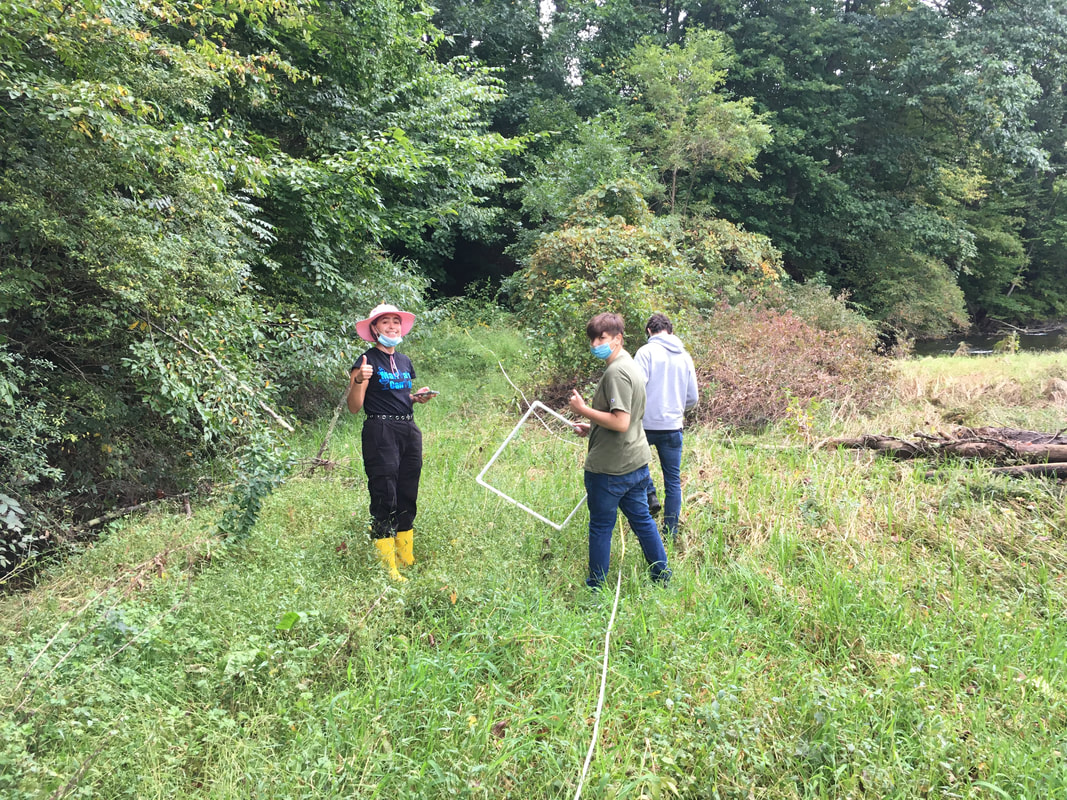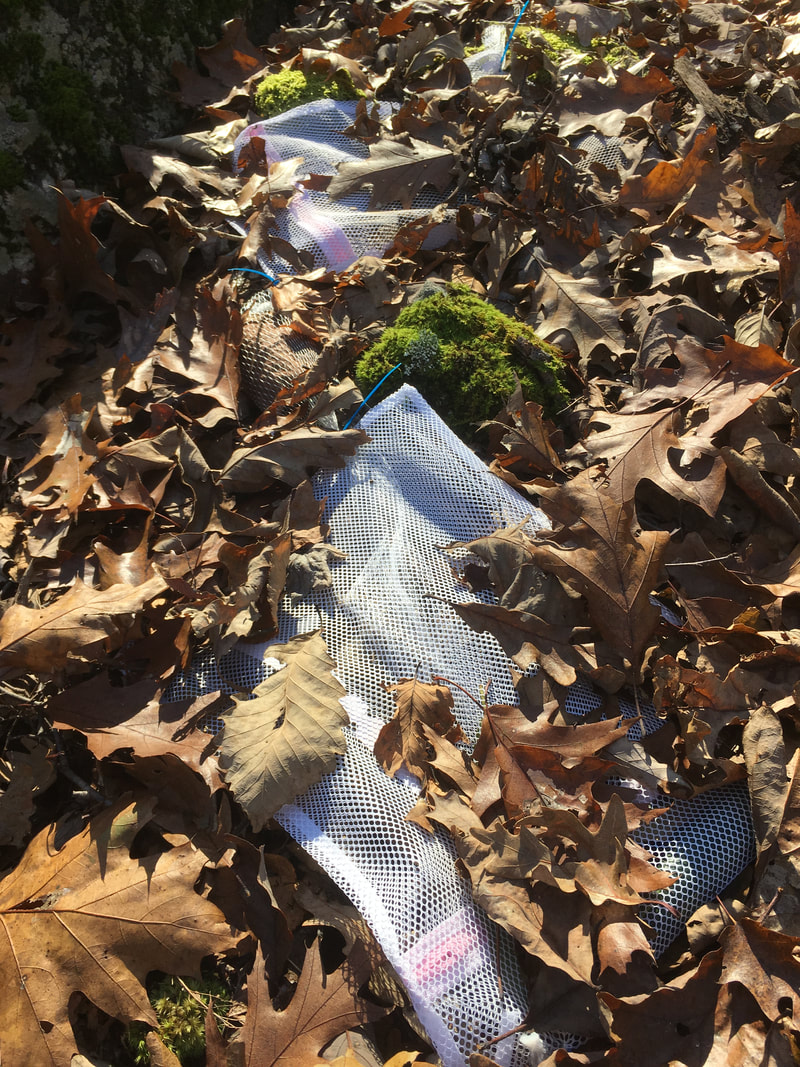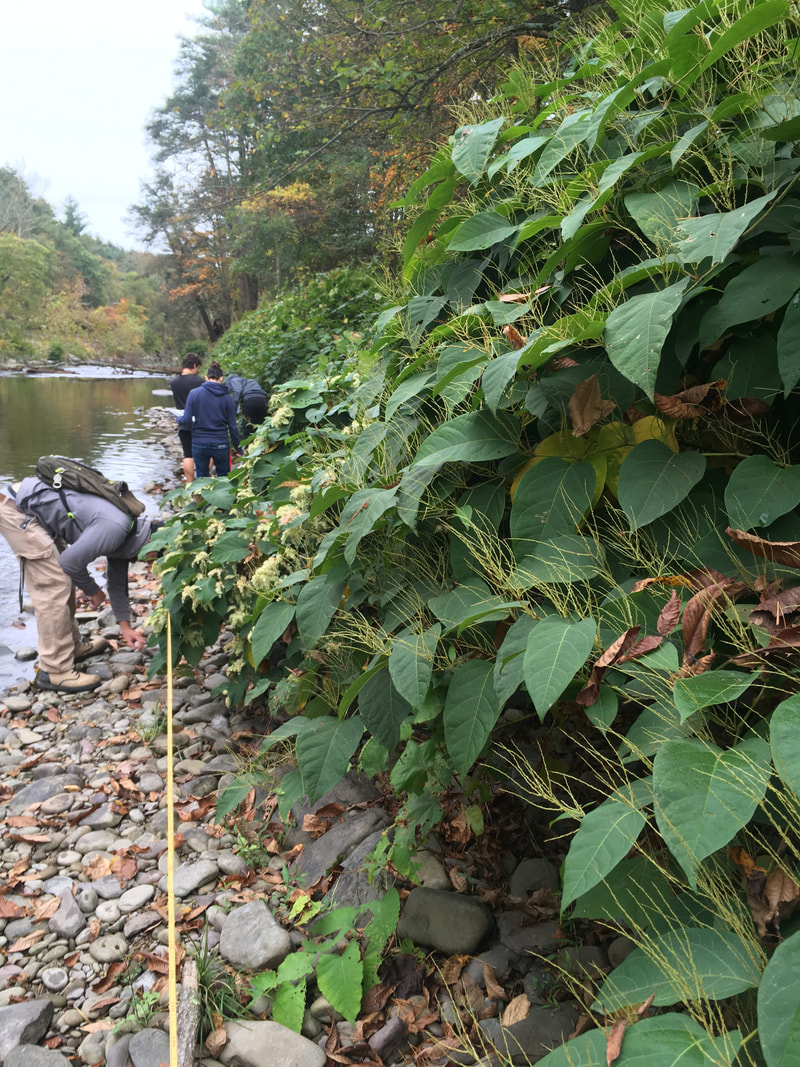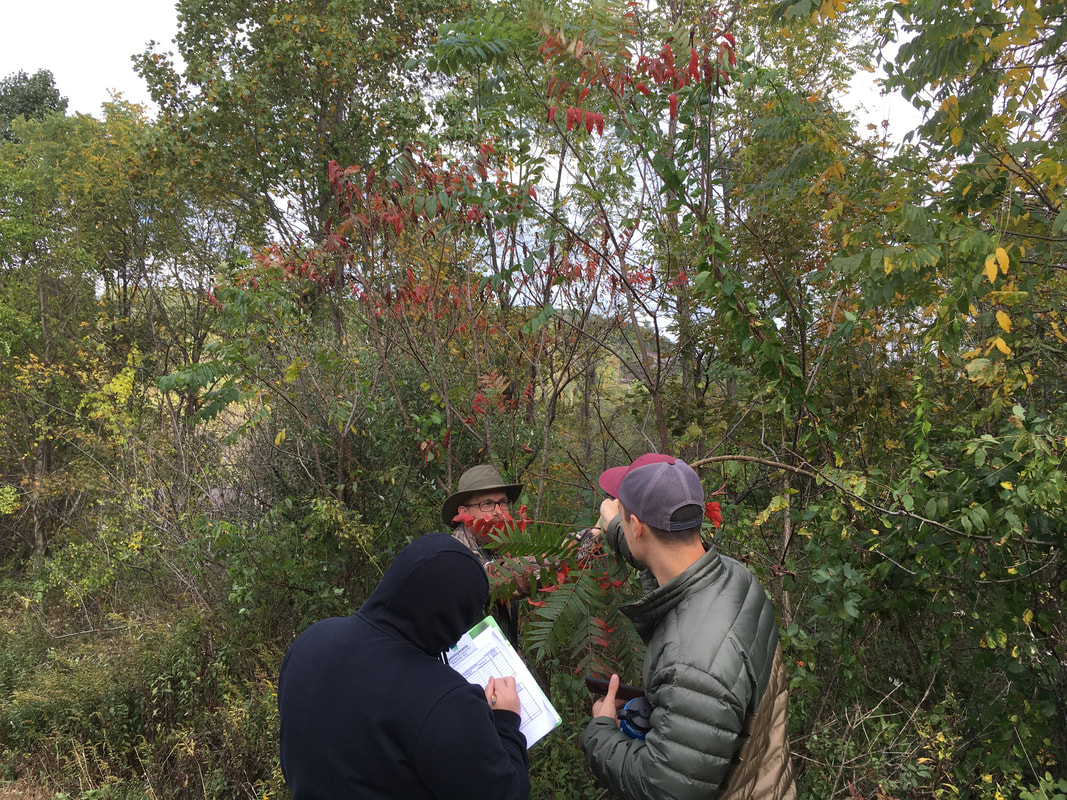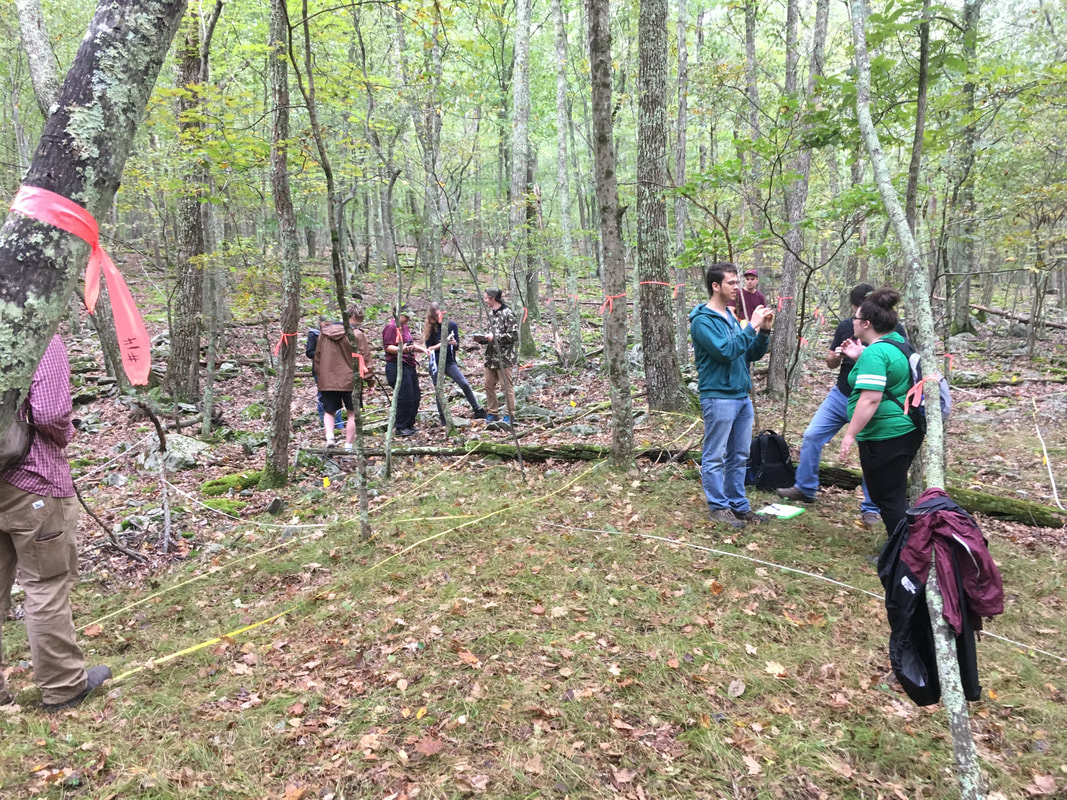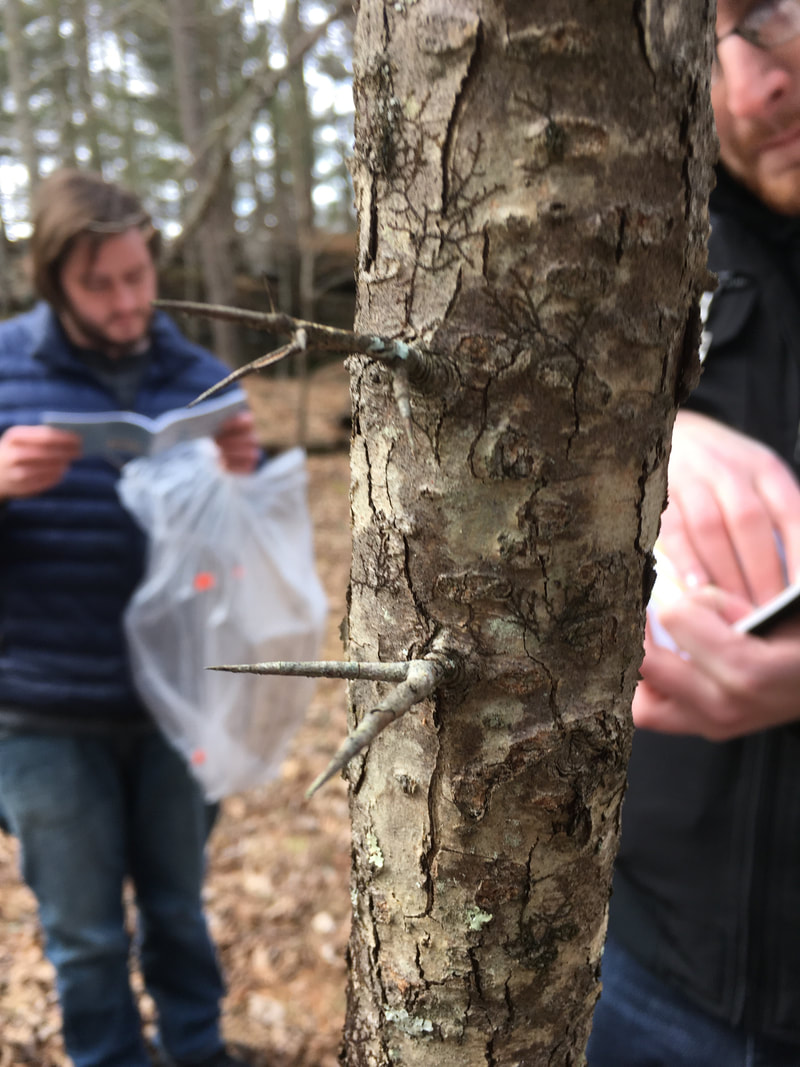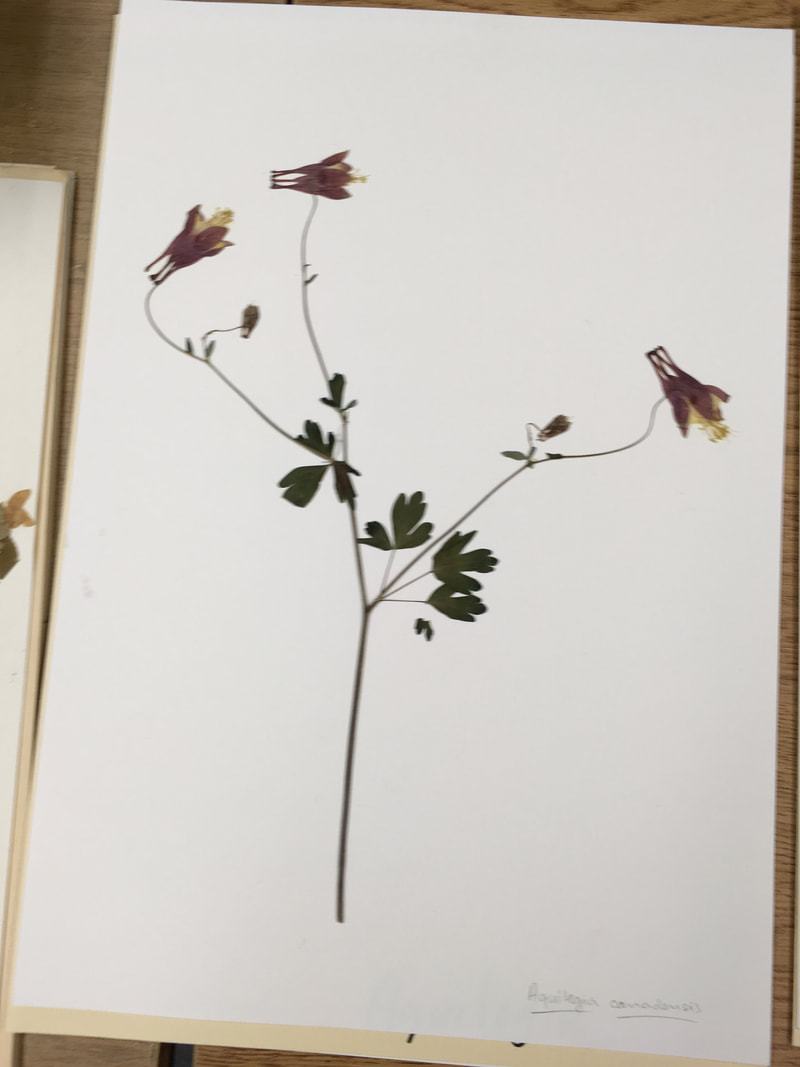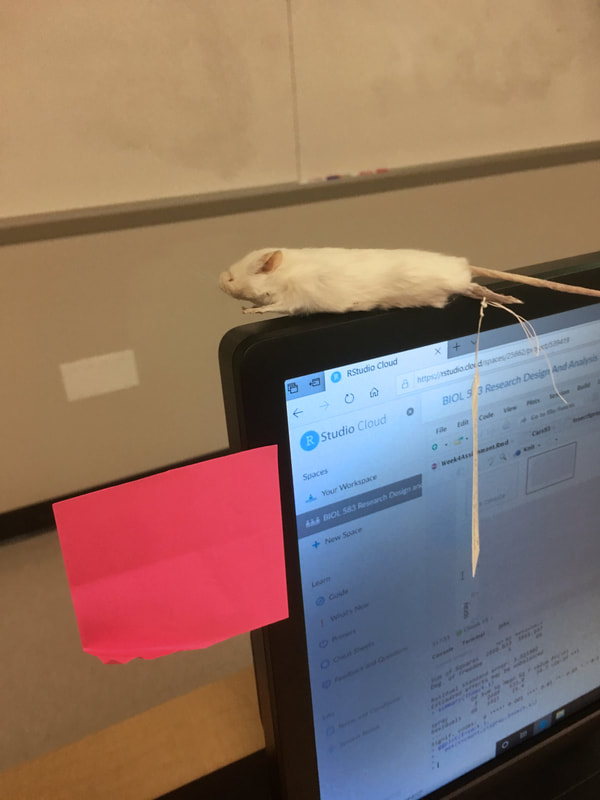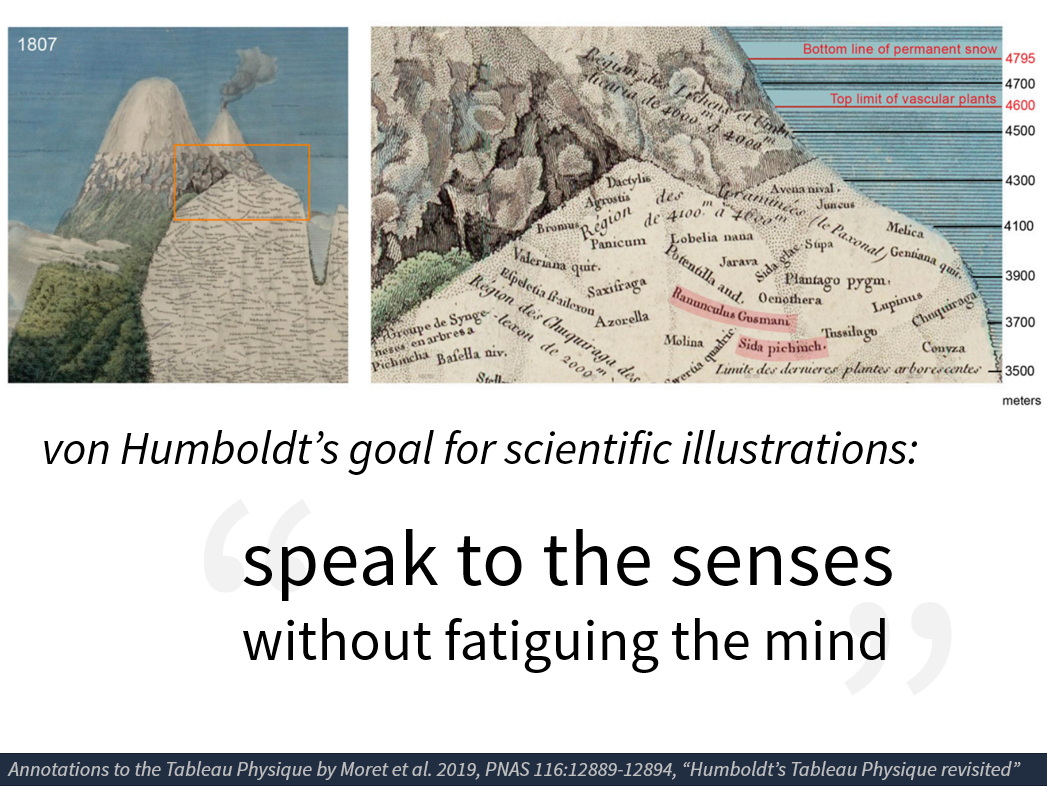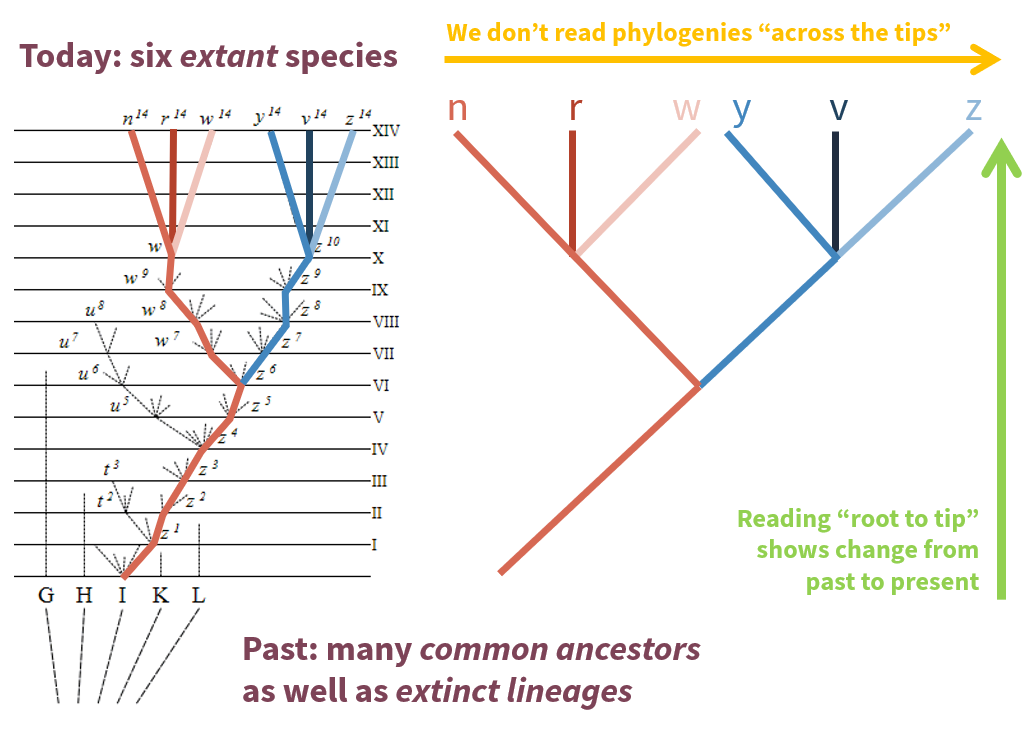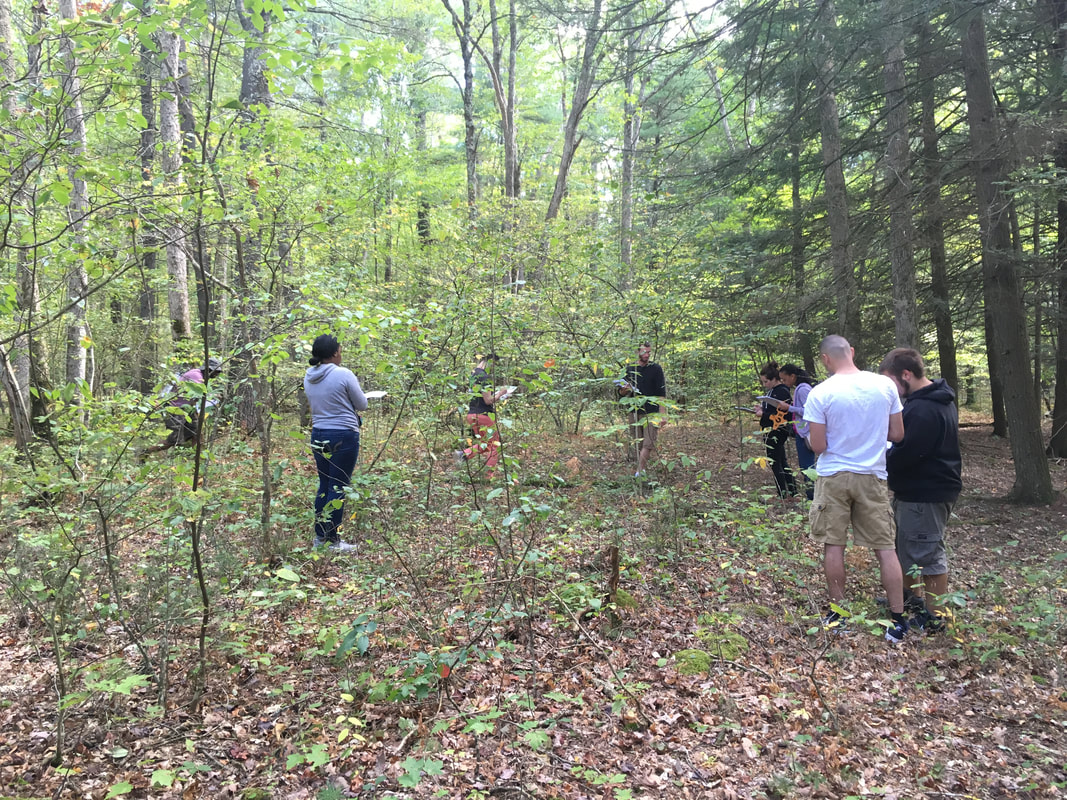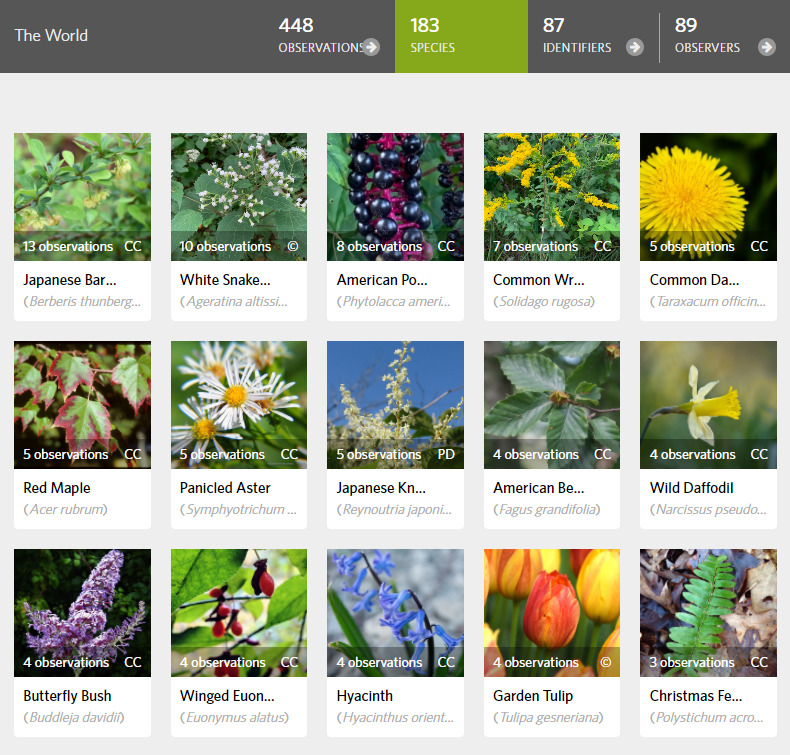|
My goal in teaching and mentoring is to help students to develop as scientists and giving them the skills they need to continue learning independently.
Lab courses are developed around real research experiences in local parks and preserves; each semester contributes to long-term research projects such as monitoring forest structure at Stony Acres and documenting vegetation change in restored golf courses. My courses emphasize critical thinking, scientific writing, and quantitative/analytical skills. I introduce students to primary literature, current research, and relevant current events, so they can see how scientists use the concepts they are learning in class. |
|
Courses Taught
Current courses taught
BIOL 200 | General Ecology (lecture and lab) | Fall and Spring BIOL 423/523 | Plant Ecology (lecture and lab) | Fall BIOL 428/528 | Biogeography | Spring BIOL 495 | Seminar I | Fall and Spring BIOL 583 | Research Design and Data Analysis for Biologists | Spring Additional courses taught BIOL 115 | Introductory Biology II Lab BIOL 220 | Field Botany (lecture and lab) | Spring BIOL 496 | Seminar II | Spring Independent studies, research, and internships BIOL 485 | Independent Study (undergraduate) BIOL 486 | Field Experience and Internship (undergraduate) BIOL 494 | Research in Biology BIOL 572/573 | Thesis I and II BIOL 586 | Field Experience and Internship (graduate) BIOL 577 | Independent Study (graduate) |
|
Plant Ecology
As a plant ecologist, one of my primary motivations in teaching is to help students gain awareness and appreciation of the plants that surround them. I aim to help students become more aware of plants as compelling, dynamic living organisms, rather than just a green backdrop to the rest of our lives.
Plant Ecology places the study of the form and function of plants in the context of their ecological interactions. This course incorporates class discussions, laboratory and field field observations, and original research projects carried out by the class. Students learn plant identification skills and methods of ecological research and vegetation analysis through hands-on practice in the classroom and outdoors. Course Description
This course is designed to instill knowledge of the principles of fundamentals of plant ecology and the methods of vegetation analysis.
Learning Objectives
|
Field BotanyField Botany trains students in the identification and classification of plant species. The course includes the use and preparation of dichotomous keys, the basics of plant systematics, and training in skills needed to identify local plant species. Students work in the field and with specimens in the Franklin B. Buser Herbarium, and learn to prepare specimens for the herbarium collection.
Course DescriptionThis course includes field studies in identification and classification of native and cultivated plants of the area and special instruction in the use and preparation of keys to the identification of herbs, shrubs, trees, ferns, bryophytes, and algae. Phylogenetic and taxonomic relationships of the plant groups will be explored.
Learning ObjectivesThis is an intermediate-level course on the classification, identification, and ecology of local plants. Topics include:
|
|
Research Design and Data Analysis
Research Design and Data Analysis is a graduate-level course in experimental design and statistical analysis, focused on the statistical programming language R. The course covers complex experimental designs, the appropriate statistical models to analyze those designs, and the implementation of those models in R. Students become familiar with managing, plotting, and analyzing their data in R and the RStudio IDE and managing shared coding projects via GitHub.
Course Description
This course covers methods of experimental design and analysis in biological research, with special emphasis on common experimental design issues and sampling methods encountered in laboratory and field studies. The course also introduces modern computing techniques for data management and statistical analysis in biology.
Learning Objectives
After completion of the course, students should be able to:
|
|
Biogeography
Biogeography combines the study of evolution with the study of spatial patterns in ecology and evolution, to better understand the geographical distribution of organisms and the underlying causes of those distributions. This course covers the evolutionary and geological underpinnings of species distributions, as well as processes that change those distributions. This course is offered to both graduate and undergraduate students. Graduate students use the R-based ecological modelling platform Wallace to complete a species distribution modelling project to explore the transportation and spread of an invasive species of their choosing.
|
|
Course Description
This course deals with the geographical distribution of organisms. It examines the pattern of these distributions and the underlying causes for them. The question of what present distributions of organisms indicate about past climates and environments is considered. A secondary area of examination is ecology of invasions which include present day translocation of organisms from former to new habitats.
Learning Objectives
|
|
|
General Ecology students conducting a study on forest structure
Commonly observed species in the class iNaturalist project
|
General EcologyGeneral Ecology is a 200-level course required for biology majors, providing an overview of the fundamental principles of ecology, as well as training students in aspects of data collection, analysis, and scientific writing that serves as a foundation for upper-level biology courses. Students gain experience in field biology, computer simulations, basic statistics, and the drafting and revision of a formal scientific paper.
Course DescriptionThis course is a study of interrelationships of plants and animals and their environments; the influences of heat, light, air, soil, water, and biotic factors; associations and successions; habitat types; populations, equilibrium, and predator-prey relationships.
Learning Objectives
|
